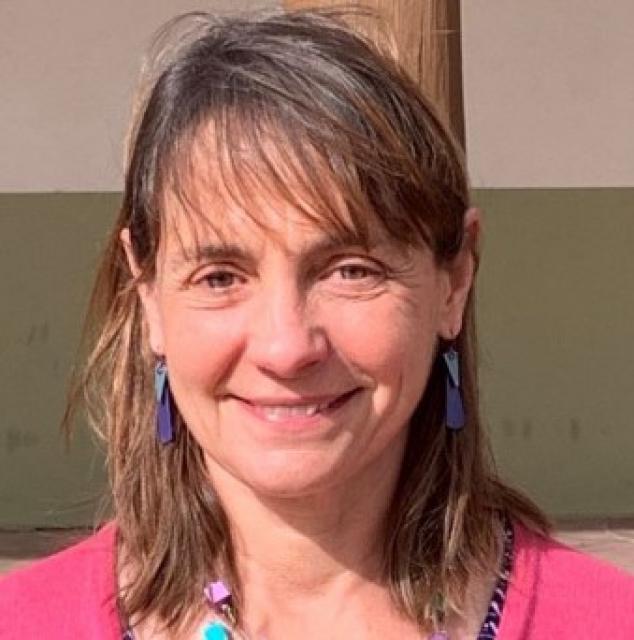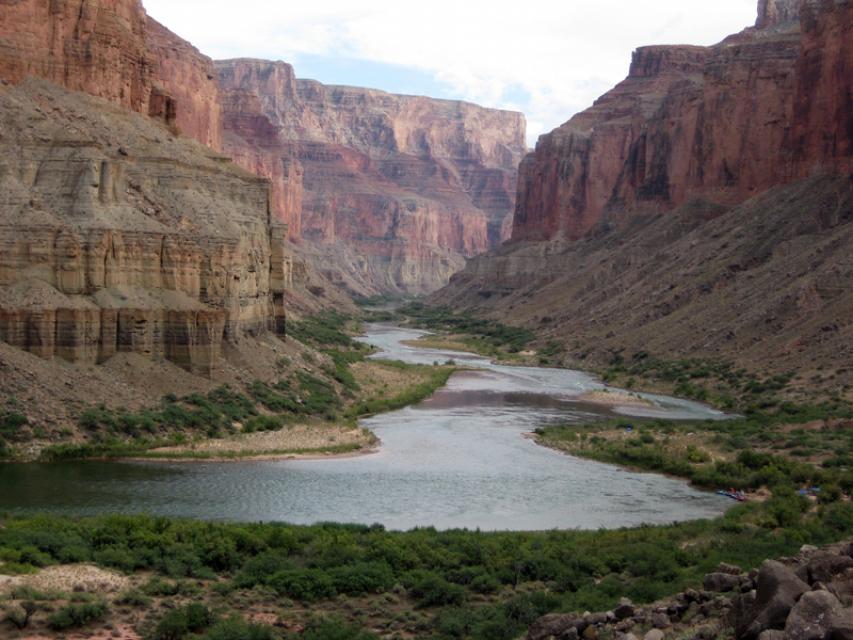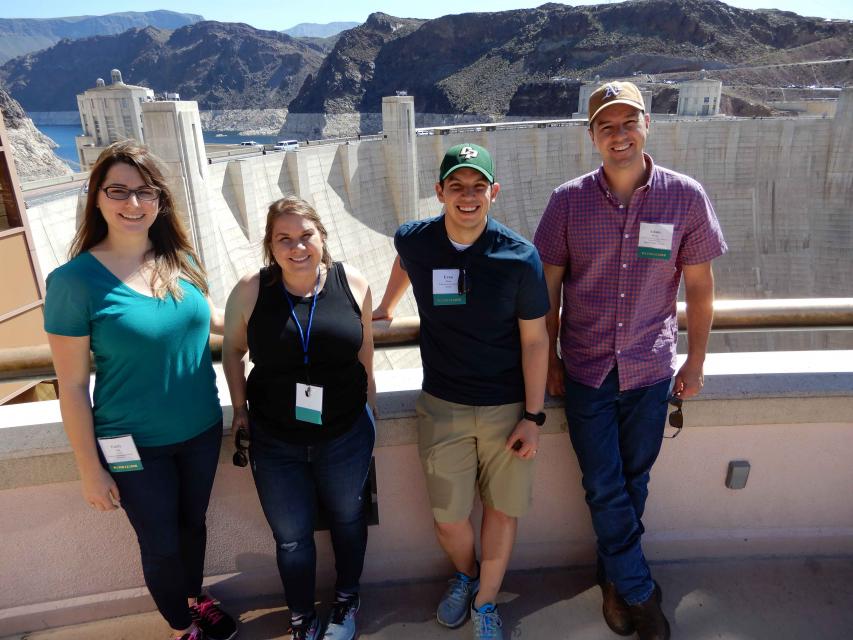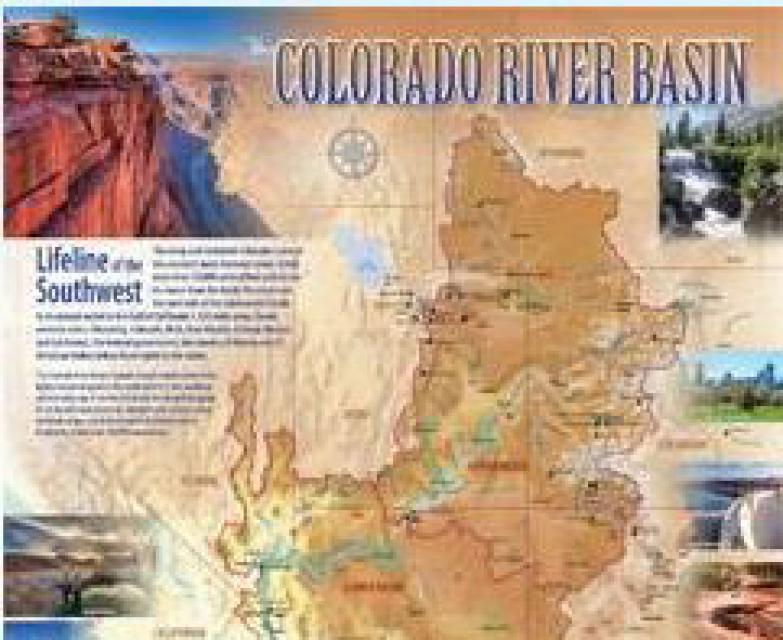WESTERN WATER-A Colorado River Veteran Takes on Top Water & Science Post at Interior Department
READ OUR WESTERN WATER Q&A, WATER WORD OF THE DAY AND DON'T-MISS WATER READS FROM ACROSS THE WEST
Dear Western Water readers:
 For more than 20 years, Tanya
Trujillo has been immersed in the many challenges of the Colorado
River, the drought-stressed lifeline for 40 million people from
Denver to Los Angeles and the source of irrigation water for more
than 5 million acres of winter lettuce, supermarket melons and
other crops.
For more than 20 years, Tanya
Trujillo has been immersed in the many challenges of the Colorado
River, the drought-stressed lifeline for 40 million people from
Denver to Los Angeles and the source of irrigation water for more
than 5 million acres of winter lettuce, supermarket melons and
other crops.
Trujillo has experience working in both the upper and lower basins of the Colorado River, basins that split the river’s water evenly but are sometimes at odds with each other. Now, she’ll have a chance to draw upon those different perspectives as Assistant Secretary of the Interior for Water and Science, where she oversees the U.S. Geological Survey and – more important for the Colorado River and federal water projects in California – the Bureau of Reclamation. She has ample challenges ahead of her.
Trujillo talked with Western Water news about how her experience on the Colorado River will play into her new job, the impacts from the drought and how the river’s history of innovation should help. Read the full story here.
Water Around the West
Five don’t-miss articles from around California and the West:
Snowpack in California’s Sierra Nevada could disappear in just 25 years: Kurtis Alexander of the San Francisco Chronicle explains what a dwindling Sierra snowpack from warming temperatures could mean, and the strategies California could employ to manage a scarce resource.
Utah’s Water Dilemma — Record-breaking drought along the Wasatch Front forces tough decisions about water supply: Brett Walton with Circle of Blue reports that Utah authorities want to develop new sources of water to make up for supply shortages. But public interest advocates argue that spending billions of dollars to build pipelines to transport water from distant sources such as the Colorado River is foolish. They’re urging Utah to do more to conserve its existing freshwater reserves instead.
Investors are buying up Arizona farmland for the valuable water rights: Ian James and Geoff Hing, writing in the Arizona Republic, report about how investors are now swooping in to buy thousands of acres of land – and their water rights. Some of Arizona’s small rural communities are worried the water sale would set a dangerous precedent.
Hatcheries may be the last best hope for endangered sucker fish in the Klamath Basin: With endangered sucker species facing myriad threats, including increasing temperatures and deadly algal blooms, Jes Burns of Oregon Public Broadcasting reports hatchery-born juveniles could help artificially support populations.
How Birds Help Keep the Pajaro River Levees Safe Without Poison: Elyse DeFranco in Bay Nature details the development of a wildlife-friendly approach to successfully protecting levees from the destructive activities of rodents. Instead of relying on rodenticide, this approach calls for help from their natural predators: birds.
Water Word of the Day
 The Colorado River,
considered the lifeline of the Southwest, provides drinking water
to 40 million people from Denver to Los Angeles, irrigation to 5
million acres of crops, and helps sustain a range of habitats and
ecosystems as it weaves through mountains and deserts. From its
headwaters in Colorado and Wyoming, the 1,450-mile-long river and
its tributaries pass through parts of seven states and serves
Arizona, California, Colorado, New Mexico, Nevada, Utah and
Wyoming along with 30 tribal nations and the Republic of Mexico,
and almost every drop of its water is allocated for use. You
can read more about the Colorado River and other water-related
issues in Aquapedia,
our free online water encyclopedia.
The Colorado River,
considered the lifeline of the Southwest, provides drinking water
to 40 million people from Denver to Los Angeles, irrigation to 5
million acres of crops, and helps sustain a range of habitats and
ecosystems as it weaves through mountains and deserts. From its
headwaters in Colorado and Wyoming, the 1,450-mile-long river and
its tributaries pass through parts of seven states and serves
Arizona, California, Colorado, New Mexico, Nevada, Utah and
Wyoming along with 30 tribal nations and the Republic of Mexico,
and almost every drop of its water is allocated for use. You
can read more about the Colorado River and other water-related
issues in Aquapedia,
our free online water encyclopedia.
At the Foundation
 Applications for our inaugural
2022 Colorado
River Water Leaders class are now
available. The biennial program, similar to our California
Water Leaders program that we’ve hosted for 25
years, is aimed at providing a deeper understanding of
Colorado River issues and building leadership skills. The
deadline to apply for the 2022 class is Jan. 28, 2022, at
5 p.m. Find more information on the program along with
the online application form and other required items for your
application here.
Applications for our inaugural
2022 Colorado
River Water Leaders class are now
available. The biennial program, similar to our California
Water Leaders program that we’ve hosted for 25
years, is aimed at providing a deeper understanding of
Colorado River issues and building leadership skills. The
deadline to apply for the 2022 class is Jan. 28, 2022, at
5 p.m. Find more information on the program along with
the online application form and other required items for your
application here.
Water Academy
 Our beautiful Colorado River Basin
map depicts the seven Western states that share
the Colorado River with Mexico. The Colorado River supplies water
to 40 million people in Arizona, California, Colorado, Nevada,
New Mexico, Utah, Wyoming and the country of Mexico. This
24×36-inch map, which is suitable for framing, explains the
river’s apportionment, history and the need to adapt its
management for urban growth and expected climate change
impacts. Order yours
here.
Our beautiful Colorado River Basin
map depicts the seven Western states that share
the Colorado River with Mexico. The Colorado River supplies water
to 40 million people in Arizona, California, Colorado, Nevada,
New Mexico, Utah, Wyoming and the country of Mexico. This
24×36-inch map, which is suitable for framing, explains the
river’s apportionment, history and the need to adapt its
management for urban growth and expected climate change
impacts. Order yours
here.








